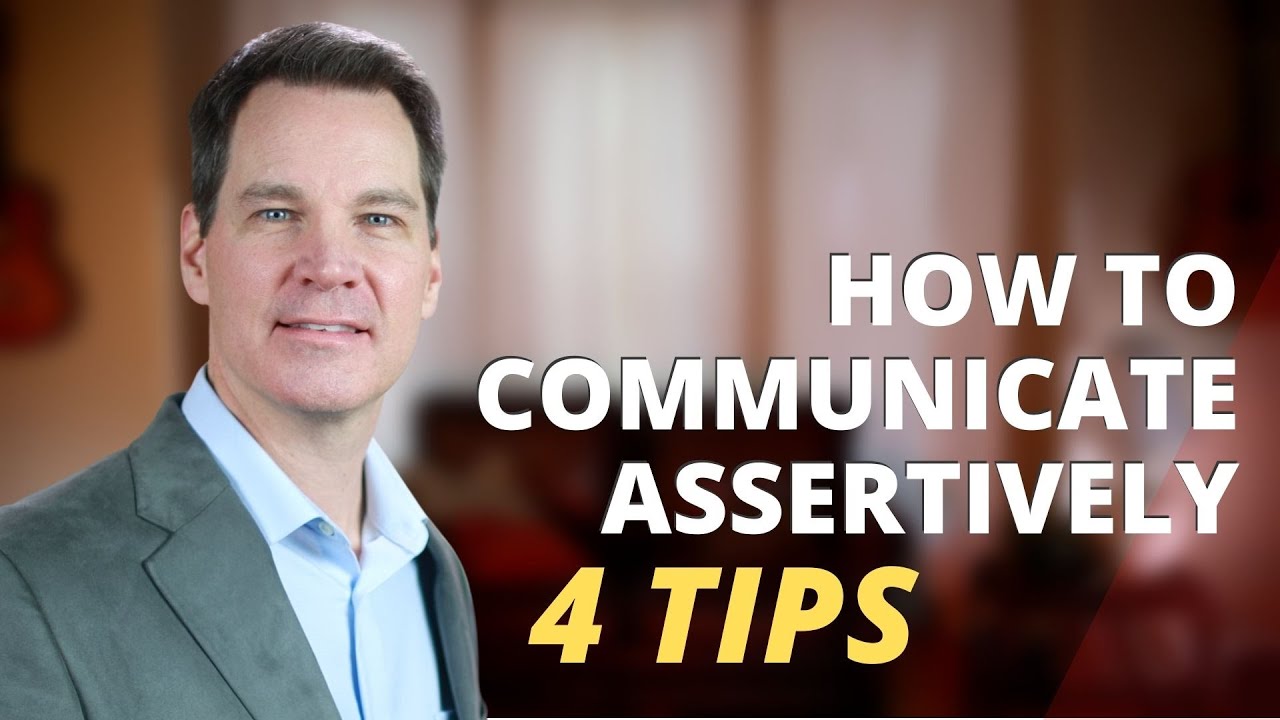AGRESSIVO, PASSIVO OU ASSERTIVO?
Summary
TLDRThis video explores the three main communication styles: aggressive, passive, and assertive. Aggressive communication can lead to conflicts and loneliness due to a hostile approach, while passive communication often results in insecurity and unmet needs. Assertiveness, however, strikes a balance between defending one's rights and respecting others, fostering healthy, honest interactions. The video emphasizes that communication styles are not fixed and can be learned and improved. Through social skills training, individuals can shift to more assertive communication, which helps maintain good relationships while confidently expressing opinions and needs.
Takeaways
- 😀 Aggressive communication style is characterized by a fixed gaze, loud speech, defiant posture, and intimidating gestures, often leading to conflicts with others.
- 😀 Passive communication involves giving up one's own desires to maintain relationships, and results in insecurity and frustration, as passive individuals struggle to assert themselves.
- 😀 Both aggressive and passive communication styles can cause harm and suffering in relationships, highlighting the need for an alternative approach.
- 😀 Assertive communication strikes a balance between defending one's rights and respecting others, promoting honest and respectful exchanges.
- 😀 Assertive people maintain direct eye contact, speak clearly, and respond calmly to situations, fostering better communication without offending others.
- 😀 Assertiveness can sometimes lead to uncomfortable situations, like disagreeing with others or offering criticism, but it is always done cautiously and respectfully.
- 😀 People can change their communication styles over time. Assertiveness is not an inherent trait but a learned skill, supported by social skills training.
- 😀 Learning to be assertive involves expressing one's own thoughts and feelings while understanding the other person's perspective and avoiding offense.
- 😀 Practicing assertive communication consistently helps to better manage emotions and align thoughts with the needs of a situation.
- 😀 While assertiveness is often the best approach, there are situations where being passive or slightly aggressive might be more effective, depending on the context.
Q & A
What are the key characteristics of aggressive communication?
-Aggressive communication is characterized by a fixed gaze, loud speaking, a defiant posture, and intimidating gestures. The content of their speech conveys hostility and intimidation, often leading to conflict with others.
How does aggressive communication affect relationships?
-Aggressive communication often leads to feelings of guilt, loneliness, and frustration in relationships, as it tends to generate conflict and may push people away despite the individual getting what they want.
What are the traits of passive communication?
-Passive communication is marked by low or hesitant eye contact, soft or trembling speech, and fake or embarrassed smiles. The content of their speech reflects insecurity, and they often suppress their own desires to maintain relationships, leading to unmet goals.
How does passive communication impact relationships?
-While passive communicators may believe they are nurturing relationships, their tendency to avoid asserting their needs results in their goals being determined by others, causing frustration and a lack of fulfillment.
What is assertive communication?
-Assertive communication strikes a balance between defending one's own rights and desires while respecting the rights and desires of others. Assertive communicators express their thoughts and feelings honestly without offending others.
What are the characteristics of an assertive communicator?
-Assertive communicators maintain direct eye contact, speak clearly at a moderate volume, have a calm posture, and express themselves in a way that shows respect for others while being open to collaboration.
How does assertiveness differ from aggression and passivity?
-Unlike aggression, assertiveness does not offend others, and unlike passivity, it doesn't ignore one's own needs. Assertive communication ensures that both parties' rights are respected and allows for open dialogue, even in challenging situations.
Can people change their communication style?
-Yes, research in psychology suggests that people can change their communication style. Assertiveness, for example, can be learned and developed over time, especially through social skills training.
What is the role of social skills training in developing assertiveness?
-Social skills training helps individuals who have difficulty asserting themselves to learn how to defend their rights, speak firmly, present good arguments, and maintain relationships without offending others.
How should one handle a conversation to remain assertive without offending others?
-Begin by expressing an understanding of the other person's perspective, then share your own thoughts and feelings calmly. Avoid offending others by choosing your words carefully, offering alternatives, and explaining the consequences of actions.
Outlines

This section is available to paid users only. Please upgrade to access this part.
Upgrade NowMindmap

This section is available to paid users only. Please upgrade to access this part.
Upgrade NowKeywords

This section is available to paid users only. Please upgrade to access this part.
Upgrade NowHighlights

This section is available to paid users only. Please upgrade to access this part.
Upgrade NowTranscripts

This section is available to paid users only. Please upgrade to access this part.
Upgrade NowBrowse More Related Video

4 Communication Styles - Passive, Aggressive, Assertive & Passive Aggressive

CONFLICT RESOLUTION for Children 🤝 Assertive 😡 Aggressive 😞 Passive 😒 Passive-Aggressive

Pentingnya Komunikasi Asertif (Karena Kita Gak Bisa Baca Pikiran Orang Lain)

How to Communicate Assertively 4 Tips

Co-Cultural Theory

Sikap Dan perilaku Asertif
5.0 / 5 (0 votes)